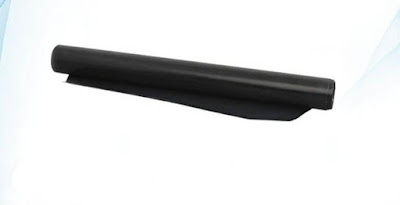Teflon is used as a trade name for a few other polymers with similar composition, such as ethylene propylene (FEP) and perfluoroalkoxy resin (PFA) The properties of these polymers are similar to those of Teflon.

FEP
FEP is softer than Teflon and is very transparent and resistant to sunlight. It is more formable than Teflon. It has an extremely low coefficient of friction and high resistance to heat. It can be used for welding, heat-sealing, and thermoforming. It is used in the design and manufacture of thermoplastics with low frictional characteristics. FEP nonstick coatings are popularly used for coating of containers used in industrial baking. FEP exists in both water-based liquid form and powder form.
FEP is softer than Teflon and is very transparent and resistant to sunlight. It is more formable than Teflon. It has an extremely low coefficient of friction and high resistance to heat. It can be used for welding, heat-sealing, and thermoforming. It is used in the design and manufacture of thermoplastics with low frictional characteristics. FEP nonstick coatings are popularly used for coating of containers used in industrial baking. FEP exists in both water-based liquid form and powder form.
to view the properties of FEP.
PFA
PFA is nonreactive in nature and has a low coefficient of friction. PFA is also used for coating industrial bake wares. However, the performance characteristics of PFA are much better than those of FEP because PFA can withstand high temperatures for a longer duration of time. In addition, it has greater toughness than both FEP and Teflon. PFA exists in powder and liquid form.
PFA is nonreactive in nature and has a low coefficient of friction. PFA is also used for coating industrial bake wares. However, the performance characteristics of PFA are much better than those of FEP because PFA can withstand high temperatures for a longer duration of time. In addition, it has greater toughness than both FEP and Teflon. PFA exists in powder and liquid form.
to view the properties of PFA.
Tefzel or ETFE
ETFE is a copolymer of ethylene and tetrafluoroethylene. Its commercial name is Tefzel. The molecular structure of ETFE is slightly different from that of Teflon. In Teflon, all hydrogen atoms are replaced by fluorine while in ETFE, a smaller number of hydrogen molecules are replaced.
ETFE is a copolymer of ethylene and tetrafluoroethylene. Its commercial name is Tefzel. The molecular structure of ETFE is slightly different from that of Teflon. In Teflon, all hydrogen atoms are replaced by fluorine while in ETFE, a smaller number of hydrogen molecules are replaced.














